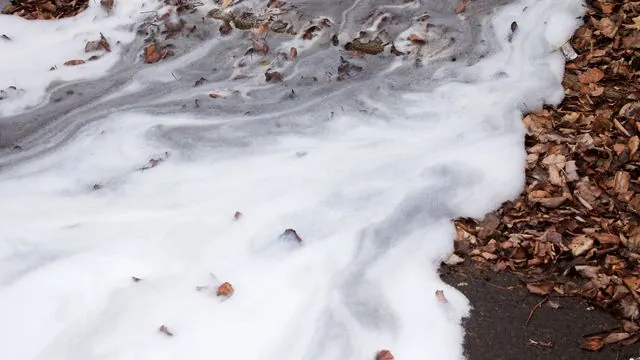
Unraveling the Mystery of PFAS Testing: Insights from NIST's Expert Jessica Reiner
2024-10-10
Author: Nur
Per- and polyfluoroalkyl substances (PFAS) and their Environmental Impact
Per- and polyfluoroalkyl substances (PFAS), often referred to as “forever chemicals,” have become a critical environmental concern, permeating ecosystems from the Arctic to the depths of our bloodstream. This growing pollution problem was uncovered by numerous researchers, but they faced a common challenge: how to effectively test for these elusive compounds.
PFAS have been around since the mid-20th century, emerging during an era of significant industrial growth. However, it wasn't until the 1990s that scientists began to adequately grasp the extent of their impact, thanks largely to the work of pioneers in environmental chemistry and the gradual release of information from leading manufacturers like 3M and DuPont.
A Journey Through PFAS Research
One of the key figures in PFAS research today is Jessica Reiner, a research chemist at the U.S. National Institute of Standards and Technology (NIST). NIST is renowned for establishing rigorous scientific testing standards across various fields, including environmental science. In a recent interview, Reiner shared insights into testing methodologies, sample preparation, and the evolving landscape of PFAS research.
Key Insights from Jessica Reiner
Dr. Reiner's journey into PFAS began in graduate school in the early 2000s, where she was involved in one of the pioneering labs measuring PFAS in environmental samples. After further pursuing her research at the U.S. Environmental Protection Agency (EPA), she joined NIST in 2008, focusing on developing and validating reference materials essential for accurate PFAS testing.
“The quality of measurements is critical,” Reiner emphasized, drawing an analogy to medical tests where precision can dictate treatment decisions. This accuracy is particularly vital for environmental assessments regarding drinking water regulations set forth by the EPA.
Testing Methods on the Frontier
When it comes to testing for PFAS, techniques are continually evolving. The most prevalent method currently involves liquid chromatography (LC) coupled with tandem mass spectrometry (MS) for quantitative analysis. Emerging technologies also aim to measure PFAS in our atmosphere using gas chromatography (GC).
While the methods are getting refined, challenges persist regarding contamination. Reiner explained that even new laboratory equipment can carry residual PFAS that might skew results. To counteract this, researchers employ strategies like introducing a "hold-up column" to delay the elution of contaminants during analysis, allowing for more precise readings.
Sample Preparation: A Foundation for Accuracy
Effective sample preparation is equally paramount in PFAS analysis. Drawing from her experience with past collaborative studies, Reiner noted that various extraction methods, including the use of basic methanol and other solvents, yield comparable results. NIST provides certified reference materials essential for labs to validate their findings, ensuring that the data produced aligns with expected values.
The Future of PFAS Analysis: New Horizons
Looking ahead, Reiner anticipates the discovery of new PFAS compounds, particularly as industries shift to alternative formulations such as cationic and zwitterionic PFAS found in aqueous firefighting foams. Notably, these substances are not yet incorporated into standard testing methods, highlighting an urgent need to broaden the scope of PFAS research.
Additionally, NIST is collaborating with the Department of Defense and universities on a high-resolution mass spectrometry database aimed at identifying previously uncharacterized PFAS. With this tool, researchers can cross-reference their data and contribute findings, ultimately enriching the understanding of the entire PFAS family.
As awareness of PFAS contamination grows, research efforts driven by scientists like Jessica Reiner remain crucial. With continual advancements in testing methodologies, the hope is to protect public health and rehabilitate affected environments from the "forever chemicals" that threaten them. Keep an eye on this space; the battle against PFAS is far from over!


 Brasil (PT)
Brasil (PT)
 Canada (EN)
Canada (EN)
 Chile (ES)
Chile (ES)
 España (ES)
España (ES)
 France (FR)
France (FR)
 Hong Kong (EN)
Hong Kong (EN)
 Italia (IT)
Italia (IT)
 日本 (JA)
日本 (JA)
 Magyarország (HU)
Magyarország (HU)
 Norge (NO)
Norge (NO)
 Polska (PL)
Polska (PL)
 Schweiz (DE)
Schweiz (DE)
 Singapore (EN)
Singapore (EN)
 Sverige (SV)
Sverige (SV)
 Suomi (FI)
Suomi (FI)
 Türkiye (TR)
Türkiye (TR)